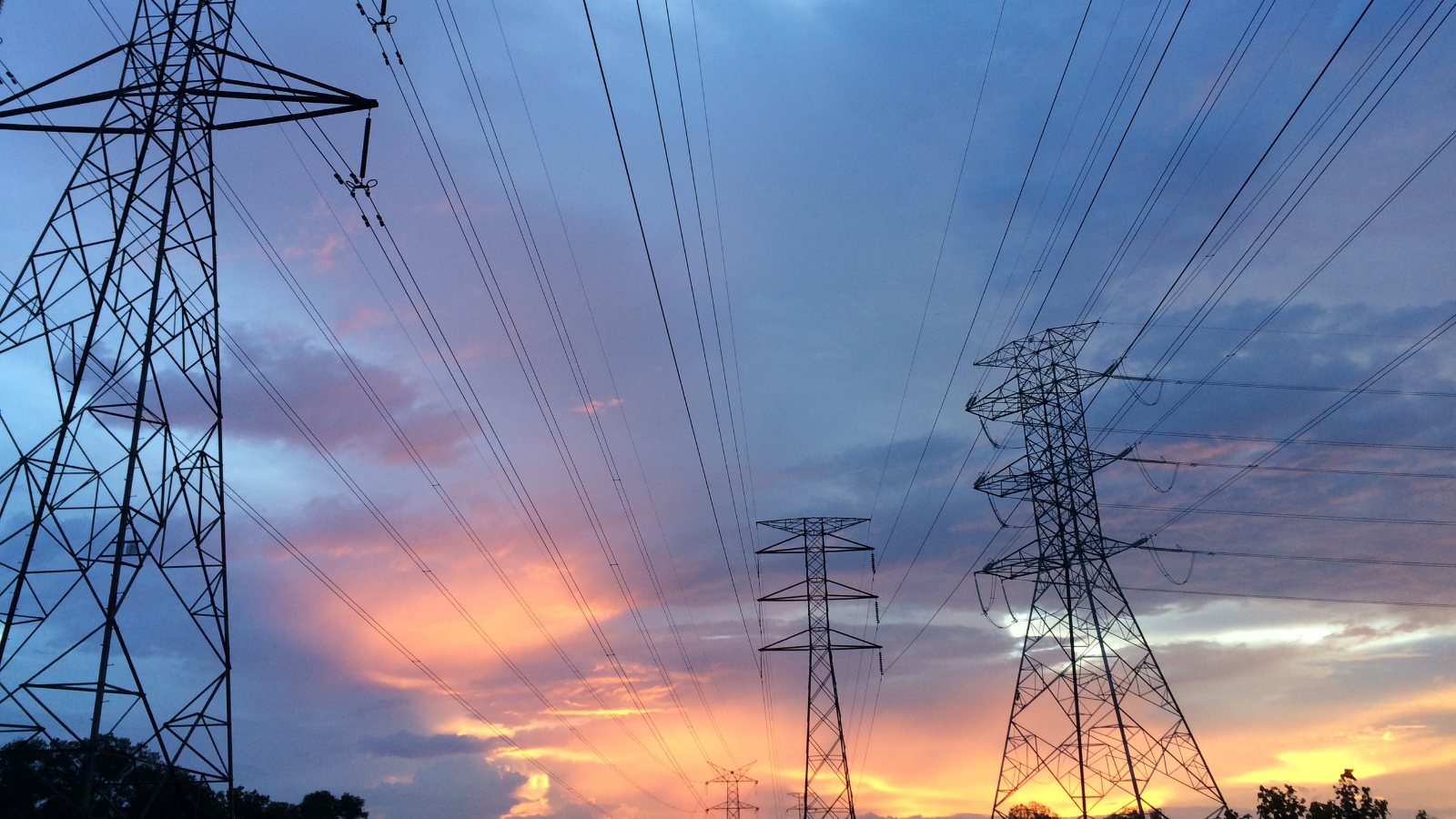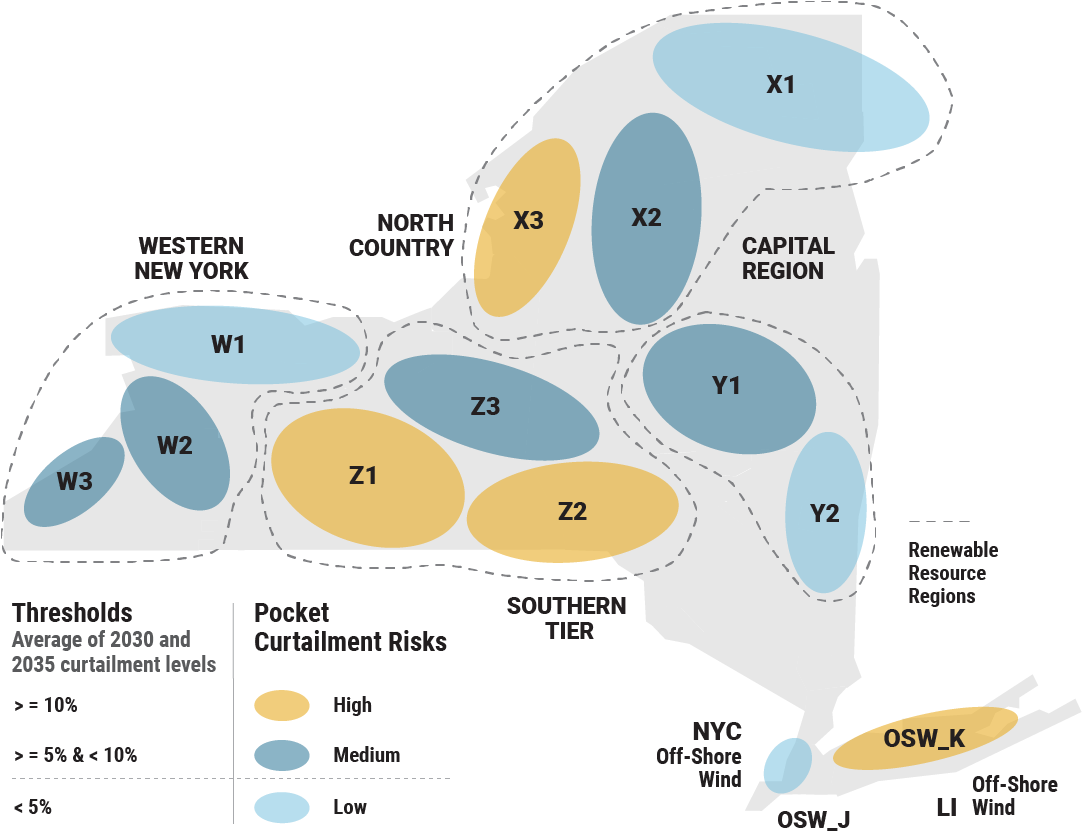Findings From the Outlook: Transmission Must Expand to Avoid Renewable Generation Pockets

The NYISO’s 2021–2040 System and Resource Outlook (the Outlook) looks at possible ways in which the power grid may evolve over the next 20 years in response to energy and climate policy mandates. The state’s Climate Leadership and Community Protection Act (CLCPA) requires 70% of electricity consumed in New York to be generated from renewable resources by 2030 and an emissions free power system by 2040.
The Outlook concludes that unprecedented levels of investment in generation will be necessary to deliver sufficient energy to meet future demand. At the same time, the report indicates that unprecedented investment in transmission capabilities will also be necessary to allow electricity generated from the influx of new renewable resources to be delivered reliably and efficiently to consumers.
To help identify and prioritize transmission investment needed to achieve CLCPA requirements, the report focuses on two important elements: energy deliverability and curtailment. Energy deliverability refers to the ability to move electricity from a generator to consumers. At times, congestion or limitations on the transmission system can restrict the amount of electricity that can flow from one area of the state to another, potentially resulting in curtailment of generation. What the Outlook found is that future renewable energy production in several regions of the state may not be deliverable to consumers due to constraints on the transmission system.
These expected transmission constraints, if left unaddressed, lead to “generation pockets,” in which renewable energy production must be limited, or curtailed to avoid overloading the transmission system. Curtailment is often necessary during periods of high renewable energy production but low consumer demand for electricity, such as windy overnight periods.
Without investment to expand transmission capabilities, energy deliverability generally is reduced as more renewable capacity is added to the system. Using data on existing generation and projections of future renewable resource development, the Outlook models the 2040 grid to assess the deliverability of these resources to identify where greater levels of curtailment are likely to occur.
The findings offer insight into where transmission expansion would have the greatest impact on reducing curtailment and maximizing the deliverability of clean energy to consumers. Greater curtailment in a given pocket suggests opportunity for transmission investment to deliver additional renewable, clean energy to consumers.
The map below identifies 13 regions in the state where renewable generation pockets are expected to form due to transmission constraints. High curtailment pockets represent transmission needs that must be addressed to achieve the public policy targets of the CLCPA.

Four pockets will particularly benefit from transmission expansion in the near-term: Finger Lakes (Z1), Southern Tier (Z2), Watertown (X3), and Long Island.
- The Finger Lakes/Southern Tier renewable generation pockets (Z1, Z2) represent regions where the land and natural resource availability (wind and solar) are expected to attract renewable generation buildout. Transmission expansion from these pockets is necessary to deliver renewable energy to the bulk grid where it would benefit New York consumers statewide.
- The Watertown/Tug Hill Plateau renewable generation pocket (X3) is driven largely by constraints on the 115 kV network that are expected to limit the availability of wind and solar generation in this area. Additional transmission is necessary to provide the resources access to the bulk grid.
- The Long Island need is driven by offshore wind development and the need to export that generation from Long Island to the rest of New York State. NYISO is currently evaluating proposals to significantly reduce the expected congestion in Long Island. However, offshore wind resource additions of up to 20 GW that are under discussion may necessitate additional transmission to deliver offshore wind energy to New Yorkers.
Many transmission needs will arise over the next 20 years driven by public policy requirements. Without investment in transmission, these areas of the New York grid will experience persistent and significant transmission limitations that prevent delivery of renewable power from these pockets to consumers in the upcoming years.
Learn More
For more about transmission investment needs to achieve state requirements reliably, download the 2021-2040 System Resource Outlook report.
View our datasheet on a summary of key takeaways of the Outlook report.
